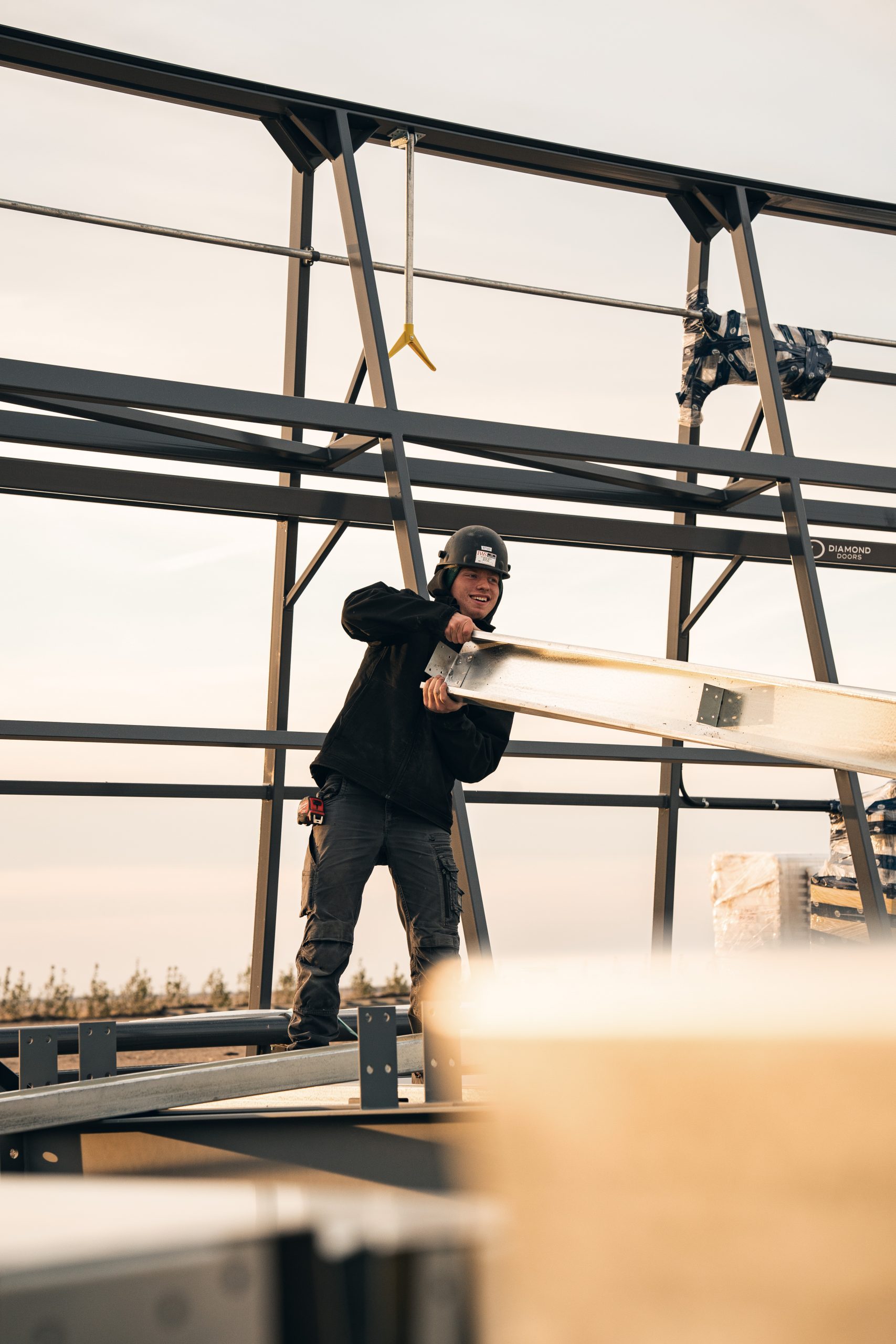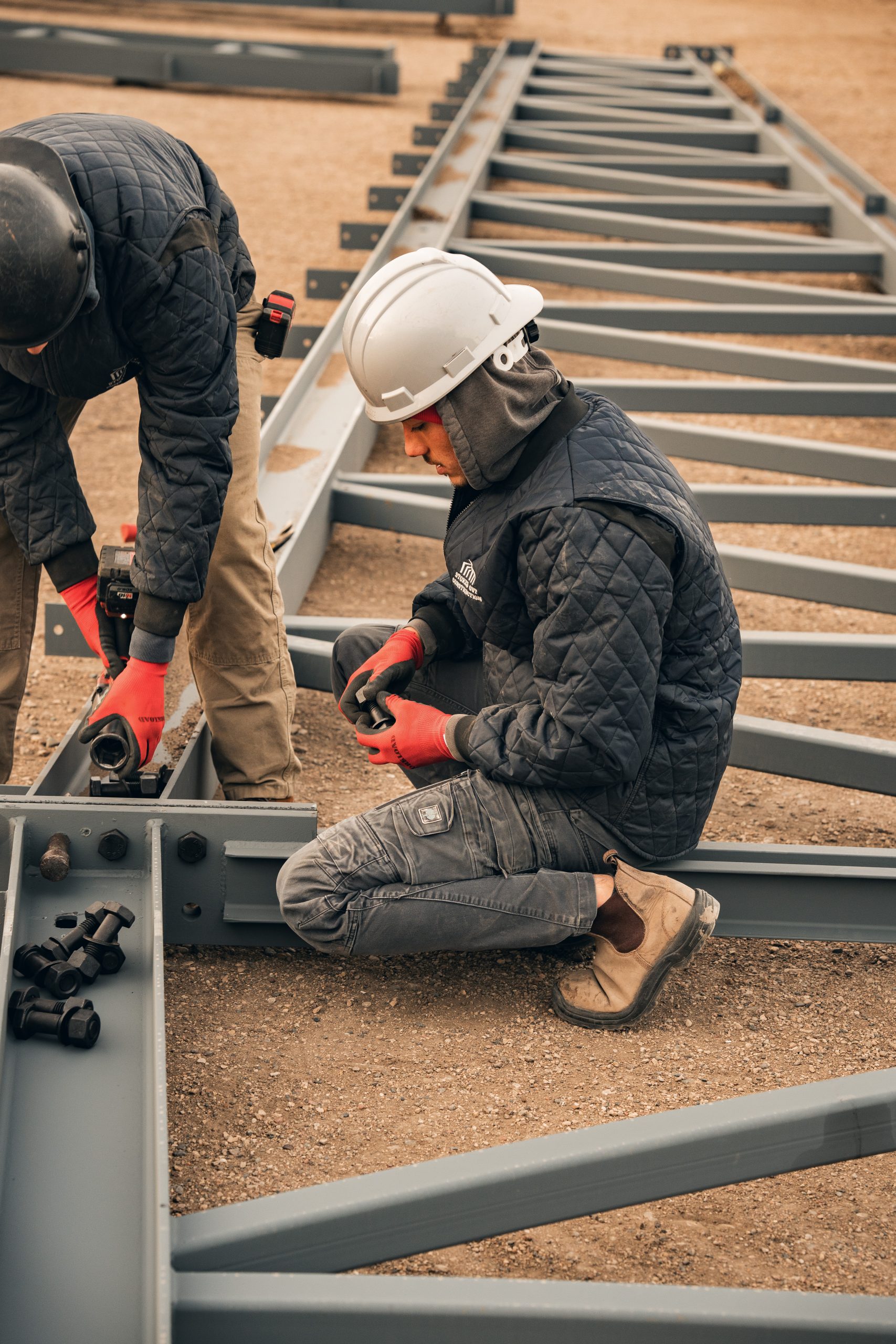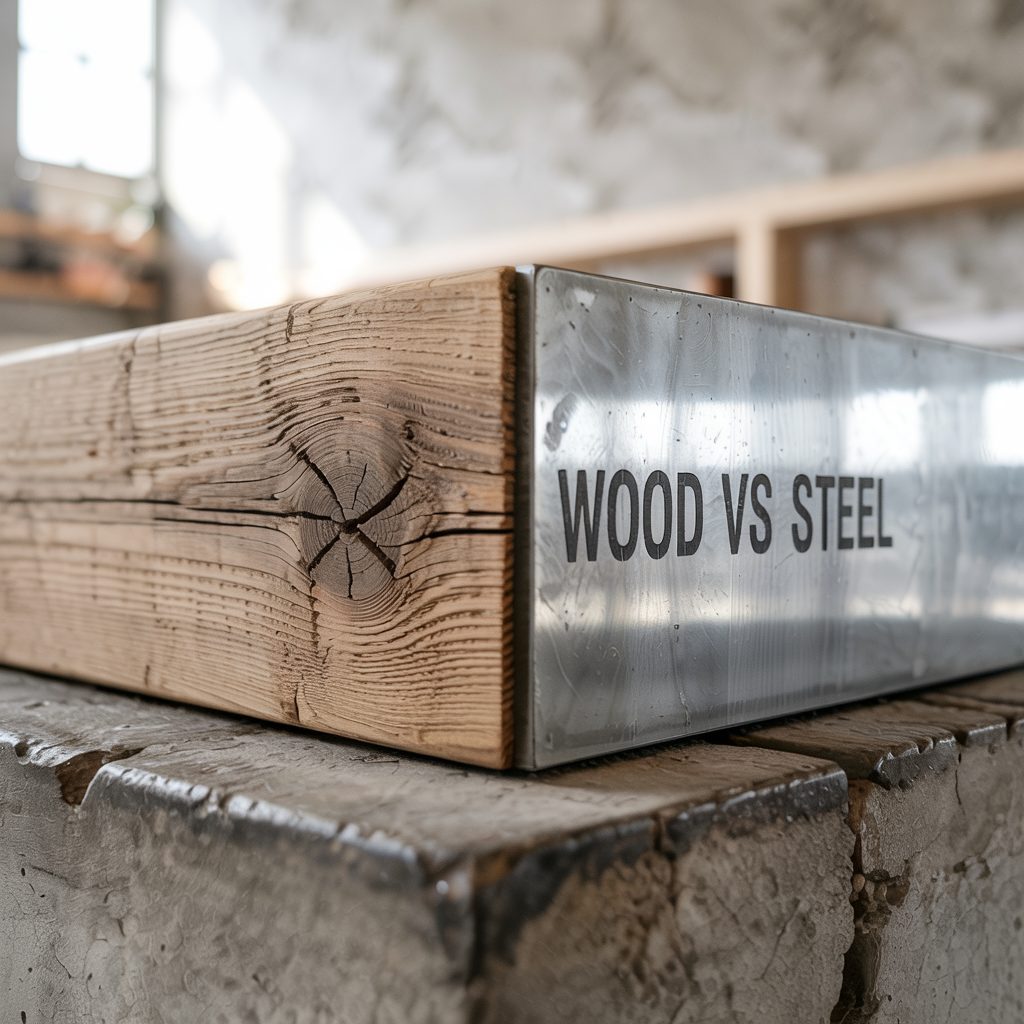The brochure made it look simple. A few guys in a field, raising gleaming steel beams against a clear blue sky. Three days later, they’re posing proudly in front of a finished workshop. You’ve been contemplating a steel building for your property, and now you’re facing the first big decision: go with a turnkey solution where professionals handle everything, or save money with a DIY kit that puts you in the driver’s seat.
This choice will impact your budget, timeline, stress levels, and ultimately, the quality of your finished building. Making the wrong call can lead to expensive mistakes, construction delays, and even structural problems down the road.
After witnessing hundreds of steel building projects succeed (and sometimes struggle), we’ve identified the key factors that should drive your decision between turnkey and DIY approaches.

The True Cost Equation
The sticker price difference between turnkey and DIY options initially seems straightforward. DIY kits typically cost 30-40% less than turnkey solutions for the same building specifications. But focusing solely on this upfront price difference misses crucial parts of the equation.
A 40×60 commercial steel building might cost $42,000 as a DIY kit versus $65,000 for a turnkey solution. That $23,000 difference looks significant on paper.
But what’s your time worth?
DIY construction of that same building typically requires 300-400 hours of labor. Even if you’re capable of doing the work, that’s nearly ten full work weeks of your time. For business owners, that’s time away from income-generating activities. For homeowners, it’s weekends and evenings consumed by construction tasks instead of family time.
Equipment rental costs add up quickly too. A telehandler or small crane rental runs $1,500-3,000 for a typical build duration. Specialized tools for steel construction add another $500-1,000 if you don’t already own them.
Then there’s the learning curve cost—the inevitable mistakes and rework that come with first-time steel construction.
The Experience Factor: A Case Study
Consider the case of Michael, a skilled woodworker who decided to build a 30×40 steel shop building on his property. With extensive construction experience (though not with steel buildings specifically), he chose the DIY route, expecting to save about $12,000.
The reality proved more complicated. While the kit arrived as scheduled, assembly challenges began immediately. The foundation—which seemed straightforward on paper—required more precision than expected. When anchor bolt placements were off by fractions of an inch, the entire steel frame wouldn’t align properly.
The first wall raising took an entire weekend, compared to the half-day he had planned. Specialized connection details that weren’t fully explained in the instructions caused additional delays. What was planned as a three-week project stretched to nearly three months of weekend work.
In the end, Michael completed his building successfully, but his actual savings—once accounting for additional materials, tool purchases, equipment rental, and his own time—amounted to less than half of what he’d projected.
The lesson? Even with significant construction experience, steel buildings have a unique learning curve that can erode projected savings.
When Turnkey Makes Sense
Despite the premium price, turnkey solutions offer clear advantages in specific scenarios:
Time constraints play a major role. If you need your building completed quickly or have limited availability to work on the project yourself, the efficiency of a professional crew becomes invaluable. A project that might take you three months of weekends could be completed in two weeks by professionals.
Complex buildings with multiple features benefit from professional installation. If your plans include complicated electrical systems, climate control, complex interior finishes, or specialized features like overhead cranes, the expertise of a turnkey provider reduces risk significantly.
Code compliance and permitting can become a major headache for DIY builders. Professional providers navigate these requirements daily and typically include permitting assistance as part of their service package. They’re also familiar with local inspectors’ expectations, reducing the likelihood of expensive corrections.
One business owner who opted for turnkey construction shared: “The premium I paid for professional installation was essentially an insurance policy against delays, mistakes, and the opportunity cost of my time. Six months later, while my competitor was still struggling with his DIY building, I was already operational and generating revenue.”
The DIY Advantage: Beyond Savings
DIY steel building kits shine in several scenarios that go beyond simple cost savings.
For builders with flexible timelines, the ability to work at your own pace can be a significant advantage. Unlike turnkey projects that run on tight schedules, DIY allows you to spread construction over weeks or months as your time and budget allow.
DIY kits also offer greater control over every aspect of construction. You can make adjustments on the fly, add custom features, or modify plans without negotiating change orders or contractor upcharges.
The satisfaction factor shouldn’t be underestimated either. Many DIY builders report tremendous pride in completing their own buildings, along with a deeper understanding of their structure that proves valuable for future modifications or troubleshooting.
The ideal DIY candidate has several key characteristics: construction experience (though not necessarily with steel buildings specifically), access to at least 2-3 helpers for critical phases, mechanical aptitude, patience for learning new techniques, and enough schedule flexibility to accommodate the inevitable delays and challenges.
Hybrid Approaches: The Best of Both Worlds
Many successful projects take a middle path between pure DIY and complete turnkey solutions. These hybrid approaches can deliver significant savings while mitigating the biggest risks of DIY construction.
One effective strategy involves hiring professionals for the foundation and steel frame erection—the most critical and challenging phases—while handling interior finishing work yourself. This approach ensures structural integrity while still allowing for substantial savings.
Another hybrid option involves purchasing a kit from a trusted supplier but hiring labor for the installation. You maintain control over the project and material specifications while leveraging professional expertise for the actual construction work.
A farm equipment dealer in Iowa used this approach for his 60×100 storage building, acting as his own general contractor while hiring specialized crews for different construction phases. He estimated savings of nearly 20% compared to a turnkey solution, without taking on the physical construction work himself.
Making Your Decision
The right choice between turnkey and DIY ultimately depends on your specific situation. Ask yourself these questions:
How valuable is your time, and how much of it can you realistically dedicate to this project?
What’s your experience level with construction projects, particularly with steel or metal buildings?
How critical is your completion timeline? Does your project have hard deadlines?
What’s your tolerance for learning curves and troubleshooting unexpected problems?
Do you have access to necessary equipment and qualified helpers?
What level of quality and professional finishing is required for your intended use?
The most expensive mistake isn’t choosing DIY when you should have gone turnkey, or vice versa. The costliest error is failing to honestly assess your capabilities, resources, and situation before making the decision.
Whether you choose the turnkey route, commit to DIY, or select a hybrid approach, understanding the true requirements of each path ensures your steel building project delivers the value and functionality you expect—without unexpected costs or compromises that you’ll regret for years to come.



